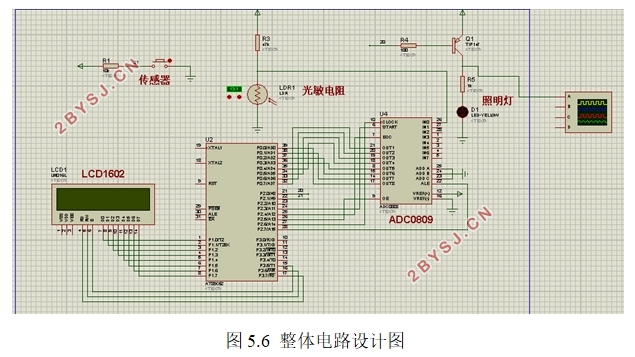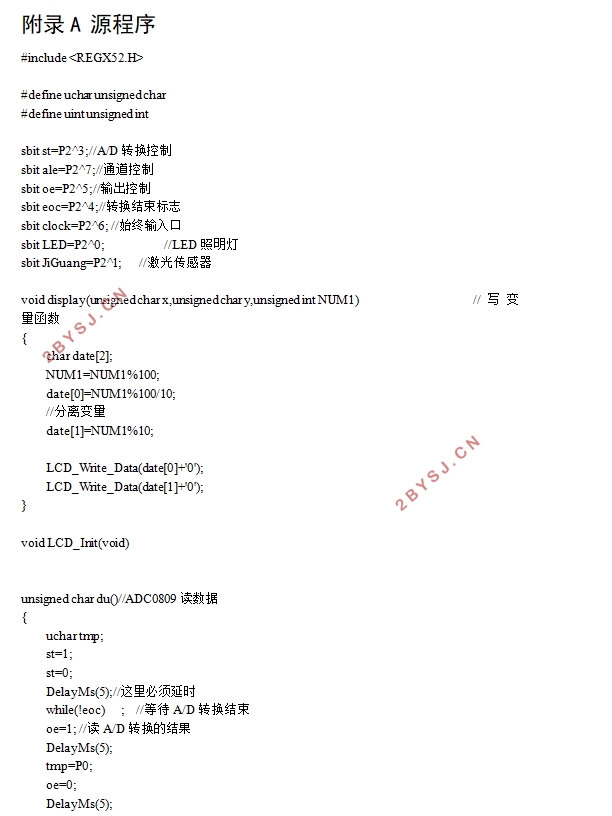智能路灯控制系统的设计(附程序代码,仿真)
无需注册登录,支付后按照提示操作即可获取该资料.
智能路灯控制系统的设计(附程序代码,仿真)(任务书,开题报告,论文说明书16000字,程序代码,仿真)
摘要
随着国家经济的发展,地球上有限的资源变得十分的可贵,如何节约资源使之得到利用的最大化成为当前紧要的问题。
本文研究的智能路灯控制系统是为了使我国城市照明这一块对电力资源的使用更合理、更智能,从而达到节能的目的。该系统通过处理光敏传感器与激光传感器检测的数据对系统进行控制,实现了根据光照和人流量的变化控制自身的启停与亮度,在节约能耗的同时也延长了路灯的使用寿命。本文详细介绍了设计智能路灯控制系统时的创新思维、具体实施方案、元器件选型、硬件电路、软件设计和工作原理等。
实验表明,本文设计的智能路灯控制系统可以很好的达到降低路灯电能消耗的要求,提高了用电效率,这对于资源匮乏的现在社会来说,无疑是一束希望之光。我相信该设计的推广会是迈向时代前线的重要一步。
关键词:智能路灯、单片机、节能
ABSTRACT
With the development of the Chinese economy, the limited resources on earth have become very valuable. How to save resources and maximize their utilization has become a critical issue.
The smart street light control system studied in this paper is to make the use of electric power resources in China's urban lighting more reasonable and intelligent, so as to achieve the purpose of energy conservation. The system controls the light sensor and the laser sensor by processing the data of the system, and realizes the start and stop and brightness control according to the change of the light and the flow of people, and also prolongs the service life of the street lamp while saving energy consumption. This article introduces in detail the innovative thinking, specific implementation scheme, component selection, hardware circuit, software design and working principle when designing intelligent street lamp control system.
Experiments show that the intelligent street lamp control system designed in this paper can well meet the requirements for reducing street lamp power consumption and improve the efficiency of electricity consumption. This is undoubtedly a hopeful light for the current society with scarce resources. I believe that the promotion of this design will be an important step towards the era.
Key words:Intelligent street lighting、Single-chip microcontroller、energy saving


目录
第1章 绪论 1
1.1课题研究背景 1
1.2课题研究的目的和意义 1
1.3课题的国内外研究现状 2
1.3.1国内研究现状 2
1.3.2国外研究现状 2
1.4课题的预期目标和研究内容 3
第2章 系统总统结构设计 4
2.1方案设计 4
2.2方案选择 4
2.3系统工作过程说明 5
第3章 硬件设计 6
3.1硬件结构设计 6
3.2光照的采集与检测设计 6
3.2.1光照检测原理 6
3.2.2光电式传感器选型 7
3.3激光信号的采集与检测设计 8
3.3.1激光检测原理 8
3.4智能控制器硬件设计 10
3.4.1微处理器的选型及介绍 10
3.4.2单片机最小系统 12
3.5 A/D转换电路 13
3.6液晶显示电路 15
第4章 软件设计 17
4.1软件结构设计 17
4.2系统主程序 18
4.3 AD采样程序 18
4.4 PWM控制 19
4.4.1PWM调光原理 19
4.4.2PWM控制程序 20
第5章 电路设计 21
5.1 光电检测电路 21
5.2 激光检测电路 21
5.3 LCD液晶显示电路 21
5.4 A/D转换电路 22
5.5 路灯控制电路 23
5.6 整体电路设计 24
第6章 系统仿真 25
6.1软件介绍 25
6.1.1仿真软件PROTEUS介绍 25
6.1.2编程软件KEIL C51介绍 26
6.2仿真结果 27
6.2.1仿真电路 27
6.2.2软件编译 31
6.3问题分析与解决 32
6.3.1硬件分析 32
6.3.2软件分析 32
6.4仿真结果与分析 33
第7章 结论 34
致谢 35
参考文献 36
附录A 源程序 37
